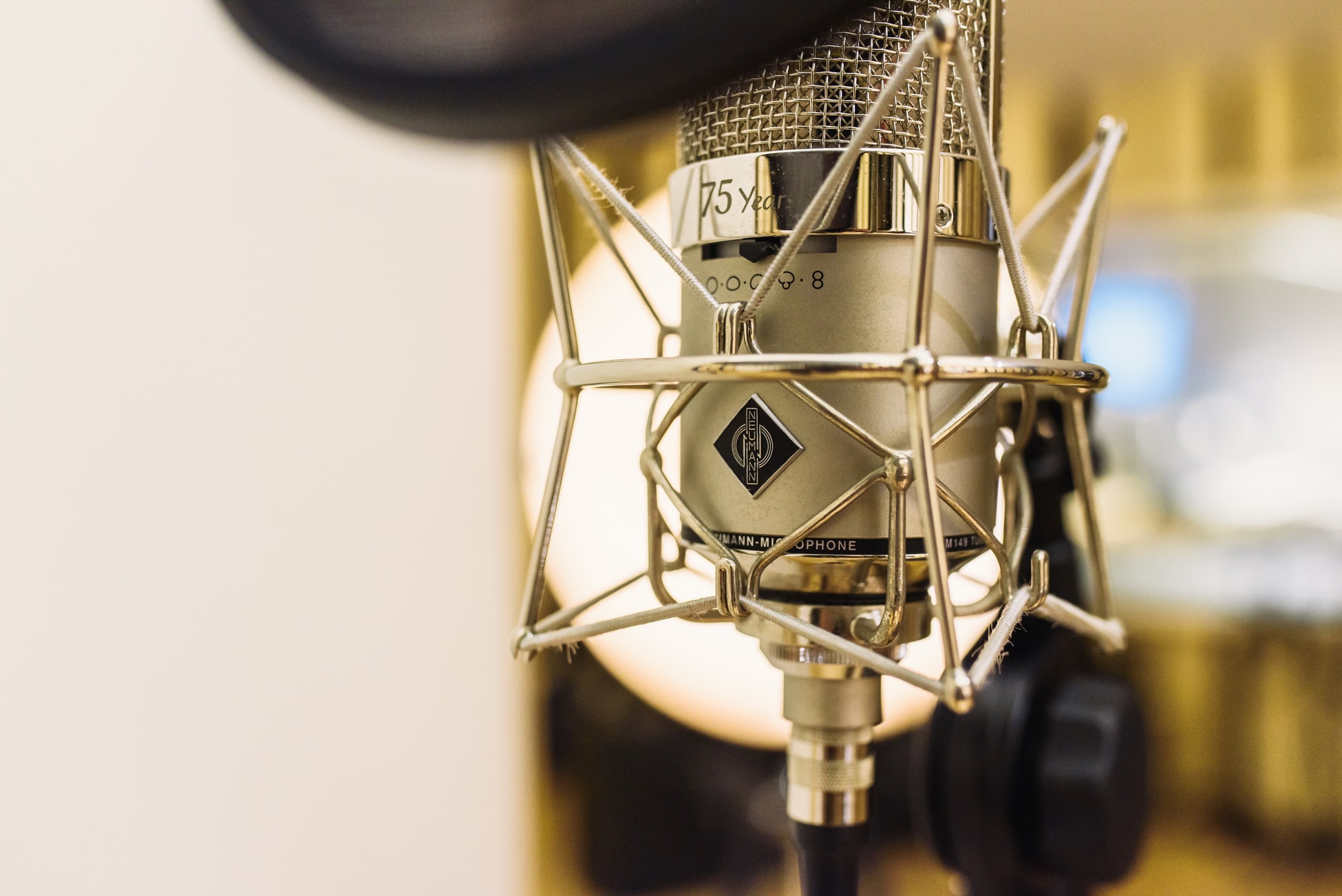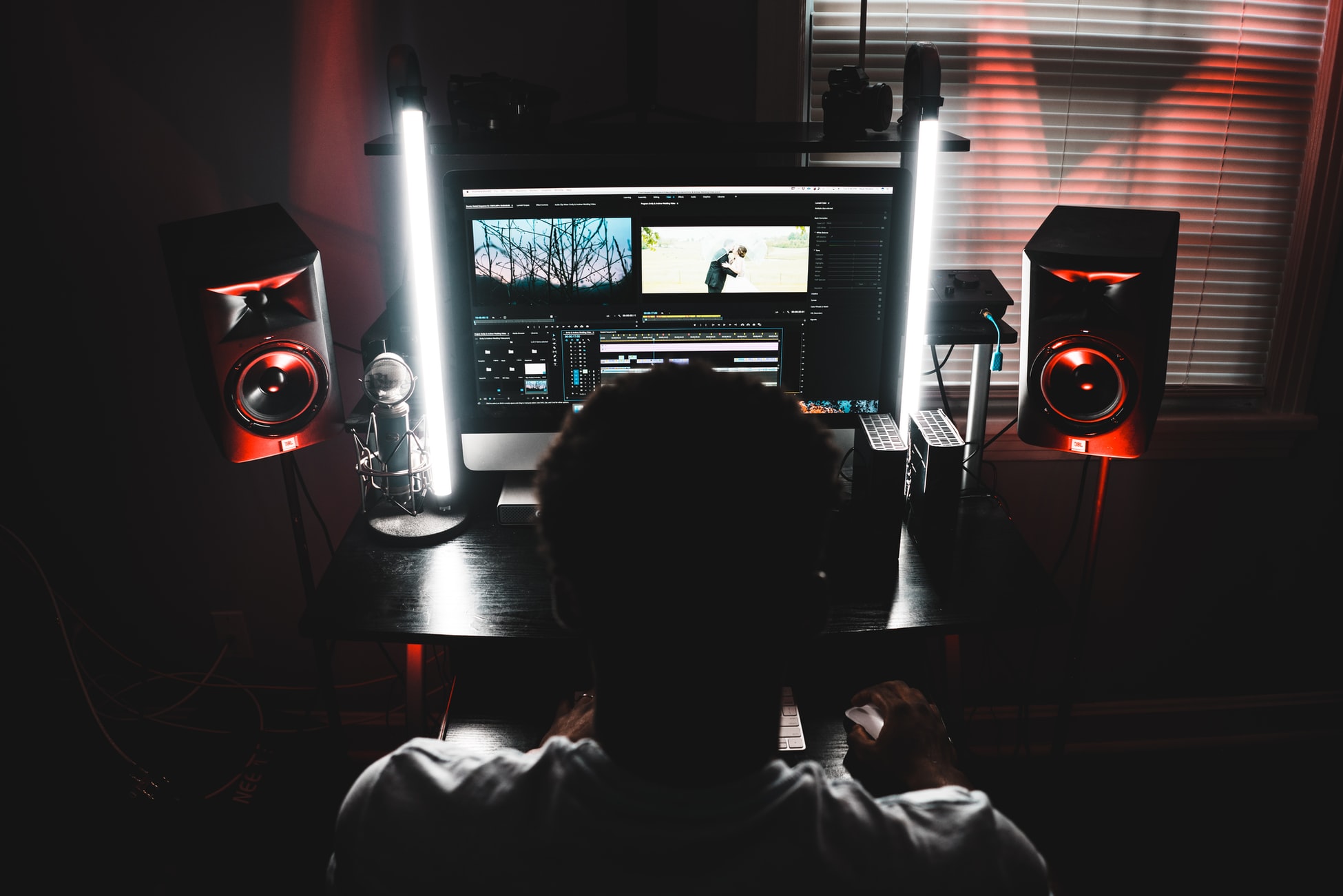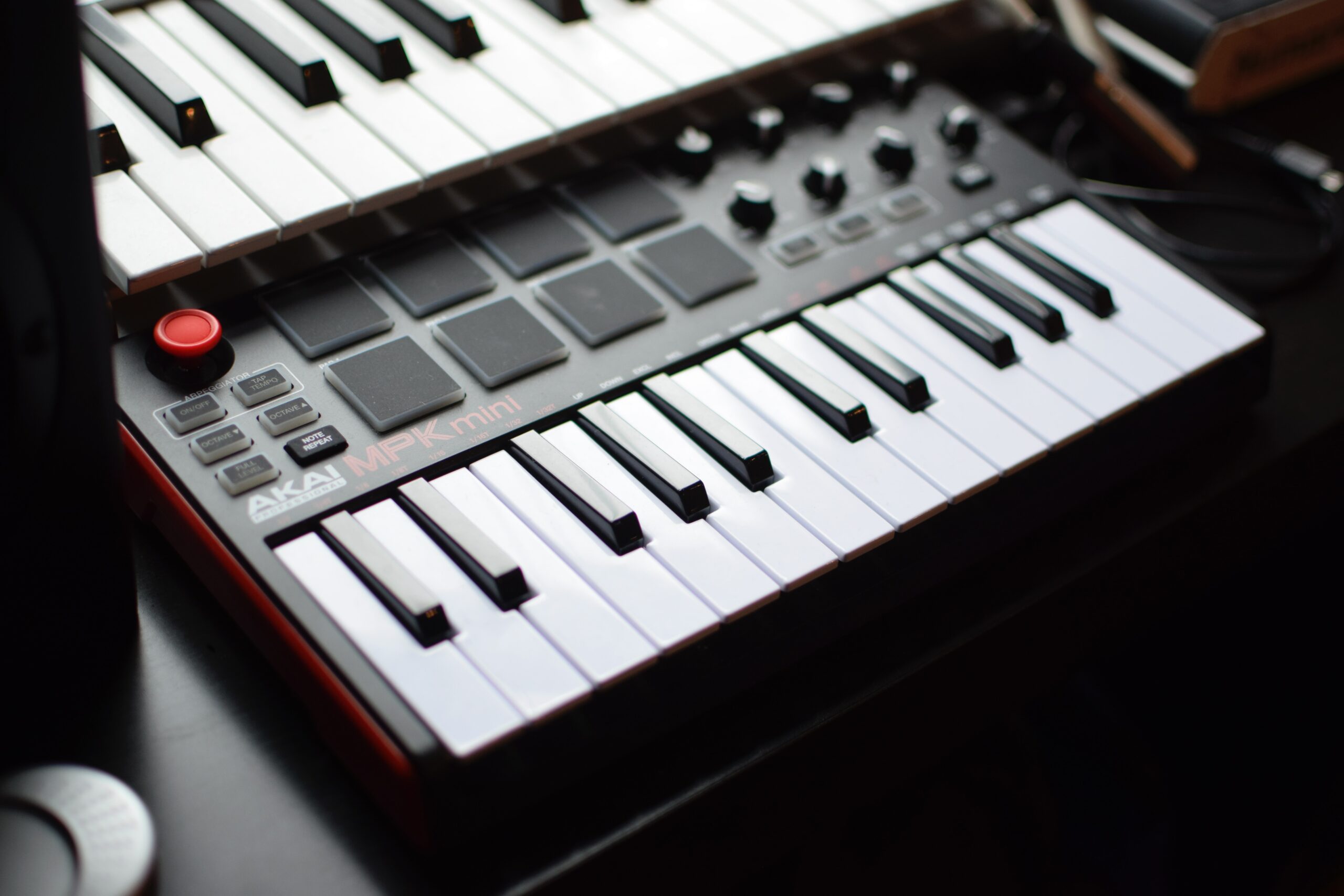Continued from Part 2: The Computer.
Today, we’ll cover some of the most affordable ways to build a studio, and we’ll look specifically at hardware: mics, monitors, headphones, and interfaces.
Microphone
Though most EDM is produced wholly on the computer, microphone choice is still essential for vocals, live instrument integration, and gliss production.
The quality of your microphones is important, but as in all gear-related issues, it’s often over-inflated. It’s important to remember that even the largest touring acts use a $100 SM57 or SM58 Shure microphone.
Ribbon
The large-diaphragm, fragile design of a ribbon microphone makes it ideal for use in vocal applications. Yet, a ribbon mic is one of the most expensive options.
Condenser
Perhaps the most useful, well-rounded microphone design is the condenser.
Recommended low-cost ($50-100) condenser mics:
MXL
Recommended mid-range ($100-500) condenser mics:
- Shure SM58
- Shure SM57
- AKG Perception series
Recommended top-range ($500-$1000) condenser mics:
Dynamic
A dynamic microphone is perhaps the most affordable, yet lowest in quality for
Cardioid
Controller Devices
MIDI keyboards
A MIDI keyboard has dual purposes as both a piano and a mappable controller for your editing software. Often keyboards, which come in any range of key count from 28, 49, and 88, often have other functions like pitch wheels, pad triggers, and other buttons to map to any MIDI function you need. The M-Audio series is a common, cost-effective option for a simple MIDI keyboard.
MIDI controllers
Apart from a MIDI keyboard, a dedicated DAW controller offers a wide bank of pads, knobs, buttons, and wheels that you can map to your controller.
Synthesizer
While most older synthesizers output analog audio only and do not directly integrate with your software, some digital or hybrid synthesizers have MIDI input/output that enables you to sync your timing and other data with your project. Some, like the Korg MicroKorg or other digital synths with analog emulation engines, are expressly built for integration with a digital recording environment.
Drum Machine/Sequencers
Drum machines, like the famed Roland TR-808 and TR-909 and many Boss or Akai models, are able to sync via MIDI with your digital environment. You’re able to use these machines to not only record percussion sounds directly but send MIDI signals to your DAW for use in software drum plugins. Sequencers, often built into a drum machine, enable you to set up arpeggiating and looping sounds.
Audio Monitors
A good pair of speakers, plus an optional subwoofer, is good for mixing your tracks. It’s recommended to look for a powerful pair of powered speakers.
I recommend at least 20w per speaker, fully enclosed architecture, and a flat response with a wide dynamic range.
Expect to budget starting from $100 from a 2-channel reference setup to $500 for a subwoofer and more powerful monitor setup.
Headphones
Though high quality monitors are important in the production of the perfect audio track, an important note often forgotten in music production is that your track is only as good as the weakest link. You can master a track on a $5000 monitor system, but the kid who streams the end track off of Pandora is listening to a 96k file through his iPod earbuds isn’t going to be able to hear those low lows and high highs.
That’s why it’s important to master using a variety of monitoring devices…and iPod earbuds should be one of them. But since earbuds aren’t comfortable for long periods of time, and aren’t accurate enough to catch everything, a solid pair of headphones are the answer.
You’ve got several options when shopping for headphones. There are several can designs to decide between.
Expect to budget around $100 for a consumer headphone, $300 for a studio grade set, and $500 or over for top-of-the-line audiophile level equipment.
Open Back
Open-backed headphones are the best for sound crispness, bass response, and an open, clear tone. The downside is that they’re essentially open speakers, so sound leakage is an issue and you’ll be able to hear anything in the background. Also, you are unable to use these while recording live instrumentation since they’ll create feedback with the microphone.
Semi-Open Back
These headphones combine the best (and worst) of open and closed back styles. They benefit from a better clarity and bass response, but also have some amount of sound leakage.
Closed Back
I prefer closed-back headphones, which can be used as monitors while recording live instrumentation since there is little to no feedback coming from the rear of the can. The downside of closed-back headphones is a reduced bass presence, but this is actually helpful while recording since they provide a flatter response.
Over-ear
Headphones that encapsulate the entire ear offer a better seal and, typically, a louder and more sensitive design, yet are sometimes uncomfortable while worn for long periods. Higher-end models will offer nicer leather pads and a well-fitted band.
On-ear
Headphones that rest upon the top of the ear are often more comfortable for extended periods, yet the downsides are that you will hear more environmental sound, and the bass will lack in depth and punch.
Not Recommended
Many headphones perfectly suitable for casual listening are not appropriate for mixing audio. Generally, any set of cans that modifies the audio using EQ, sound-canceling technology, or anything that changes the dynamics of the sound won’t be accurate enough to use during production. These include Beats By Dre, Bose QuietComfort, all earbuds, and other consumer-oriented headphones.
What to Look For
- Long shielded cord, 5’ or over
- 1/4” adapter
- 50mm drivers (or larger)
- 18,000Hz-200,000Hz range
Recommended:
- Shure SRH940 Reference
- AKG K550 Reference
- Beyerdynamic DT-770-PRO Studio



